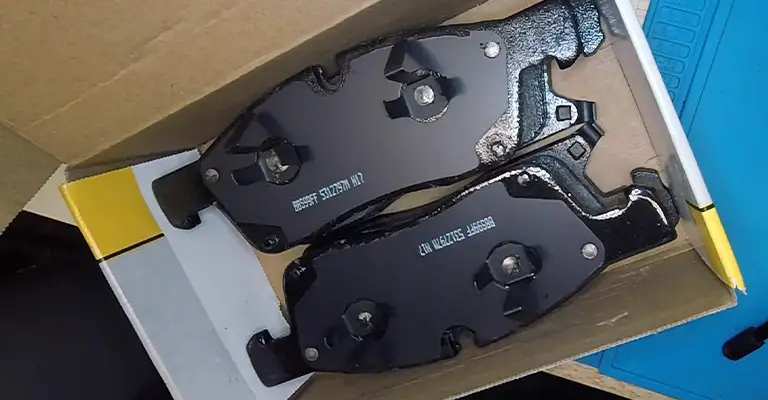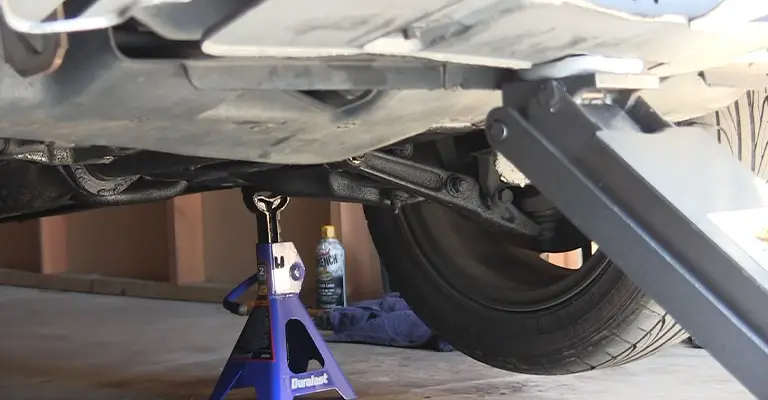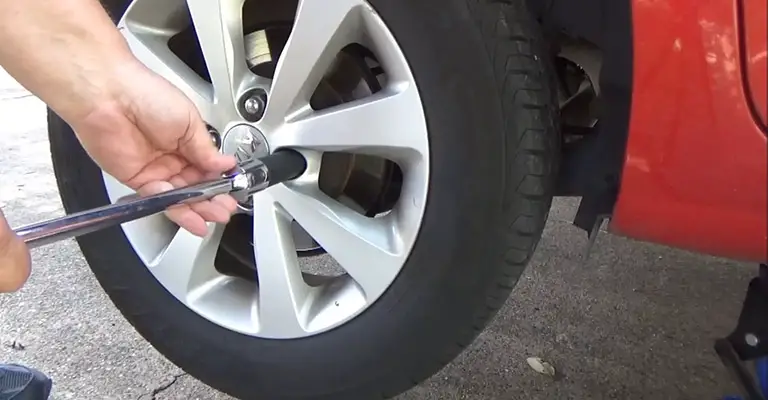Anyone who knows a thing or two about brakes will suggest getting an immediate replacement when your brake pads are 3mm left. You can still hit a few miles if you have to go for an emergency drive.
Contents
Brake Pads 3mm Left – What Should You Do?
Your vehicle’s brake pad thickness indicates how much brake material is left to perform braking operations. The manufacturer’s recommended minimum brake pad thickness is ideal to follow. However, in most cases, it’s 3mm when you should get a heads-up. It’s quite an effective way to determine if your brakes are good enough, or if they require a replacement.
Most new pads have about 12 mm of friction material at the beginning, and most mechanics suggest replacing them when they get to 3 or 4 mm. Replace your car’s brake pads before the backing plate begins to gouge out the brake rotors.
In this case, the complication can make the job more expensive to restore. So, if your pad thickness is less than the minimum thickness of 3.2 mm, opt for an immediate replacement.

How long will 3mm brake pads last?
It depends on the quality, the type of material, and how frequently you use your brakes. For stand-and-go traffic, it will last less than usual. 3mm is not much more than a tenth of an inch. A high-performance car with a lot of drifting action might last a week. If you’re a chill driver with a gentle foot it could go for a couple of months.
Distance-wise, 3mm of pads should hit 1k miles multiple times. They’ll last at least 10k miles if the inner and outer are equally worn.
How bad is 3mm on Brakes?
3mm thickness indicates you’re going to need a brake job anytime soon. You can go for a quick/emergency drive, maybe continue driving for a couple of weeks but you should seriously consider changing into a new one.
However, considering 3mm is quite thin, try to get new pads fitted asap. Brake pads may be expensive or not, but they’re far cheaper than a hospital bill or a court case, right?
What mm should you replace brake pads?
Well, 3mm is the safest measure of thickness in your pads to go for a replacement. You can still get away with 2mm, which is right around where the metal wear indicator gets exposed and causes a squeaking sound against the disc.
Inspecting Brake Pad Thickness
Many modern vehicles offer a feature of built-in dashboard indicator light that lights up when your brake system is compromised.
But remember that this warning light indicates the entire braking system, not just a brake pad indicator.
You can check your pad thickness manually to avoid brake failure and unsafe driving conditions. A visual inspection of brake thickness on your own may do the trick, but be very careful to ensure nothing goes wrong. You might need specific tools such as a brake pad measuring gauge to do the job perfectly. Considering the conditions, it’s better to get a professional to do it for you.
Follow these steps to check your brake pad thickness:
Step 1
Park your vehicle in a safe and leveled place.
Step 2
Use a jack stand to slowly elevate the part of your car you want to check the pads. Find the best position to place the jack in the user manual.

Step 3
Remove the bolts on the wheel by using a lug wrench.

Step 4
Expose the brake rotor by carefully removing the wheel and caliper.
Step 5
You can see both the inboard pad and outboard pad into the hole in the caliper. Take a brake measuring gauge, Vernier caliper, or compass to measure the thickness levels. These instruments need precise measurement and procedure so measure them carefully.
How do I choose new brake pads?
Before getting your new set of brake pads, consider some factors depending on your driving style and the conditions you keep and drive your car in. You’ll need to consider the following:
Material
Ceramic brakes are perfect for high-performance, long-lasting, and near-silent braking, but come with an expensive price tag. For smaller cars, organic brakes are a great option if you’re looking for eco-friendly and easy on your discs. However, these brake pads have a shorter lifespan than usual so take that into account.
Metallic pads are an excellent option for larger, more powerful cars. These pads have improved stopping power but they’re usually louder than other materials.
Price
Budget options may end up more expensive over time as buying quality pads will last longer than the cheap ones. Also, your safety is much more important than saving a few bucks. So, try to get the best quality pads, even it’s a bit more expensive.
Ease of installation
Check out how complex is the installation process before fitting brake pads by yourself. You may need to buy additional hardware to install if manufacturers don’t include the bare essentials with their pads.
Brake dust
Cleaning brake dust from your wheels can be a bummer. Ceramic pads are your best option if you’re not willing to do that. But remember that ceramic pads are expensive, and you may want to go for organic brake pads that give off slightly more debris.
Also, you may want to consider the noise levels and pads designed to withstand higher temperatures.
FAQ
Are brake pads checked as part of an MOT test?
The MOT test is an annual test of vehicle safety, is a part of the most important safety feature of cars. The test includes the entire braking system, such as brake pads, brake discs, and calipers.
Should I replace all brake pads at once?
No, the front wheel brake pads of the car will wear down quicker. As they take on more of the braking load, they wear out quicker than the rear ones. So, you don’t have to change all four brake pads at once. But when you do make sure to change both the front/rear pads together.
How thick a new brake pad should be?
While purchasing a new set of brake pads, you will want their friction material to be around 10 to 12 millimeters. This is the standard thickness size for most new brake pads.
To Conclude
To sum up, how long your worn-out brake pads will last depends on how you drive and how often your brake. However, if there’s no urgency, replace your pads when the pad thickness comes down to 3mm. Don’t be a cheapskate, better thousand times careful than once dead.
